Celebrate World Migratory Bird Day (WMBD) with us in our virtual “Birds Connect Our World” edition! Have fun learning about a new migratory bird every day. We have colouring pages, puzzles, activities, and more. Download for free and enjoy nature with your family at home. This week we are also celebrating World Shorebirds Day and Global Shorebird Count (3 to 9 September).
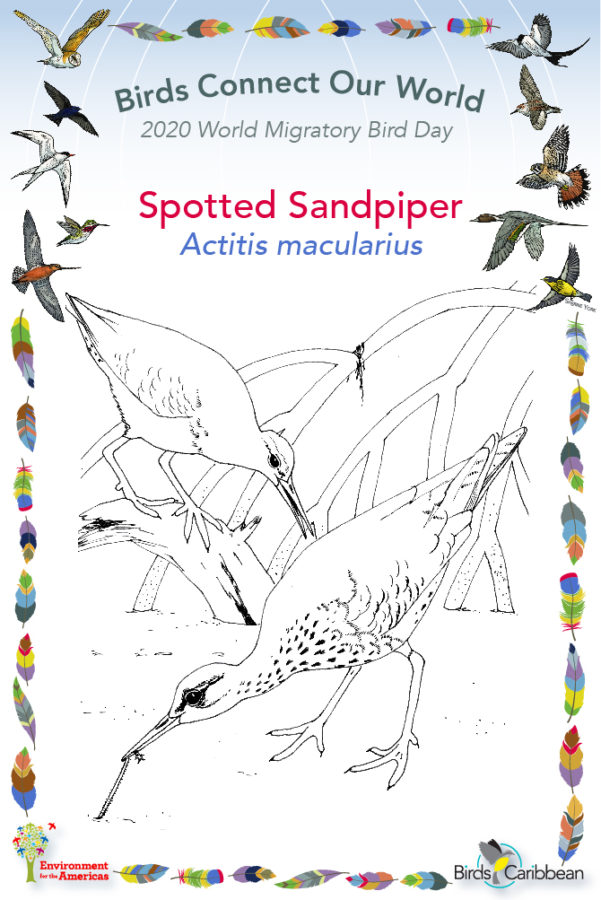
Migratory Bird of the Day: Spotted Sandpiper
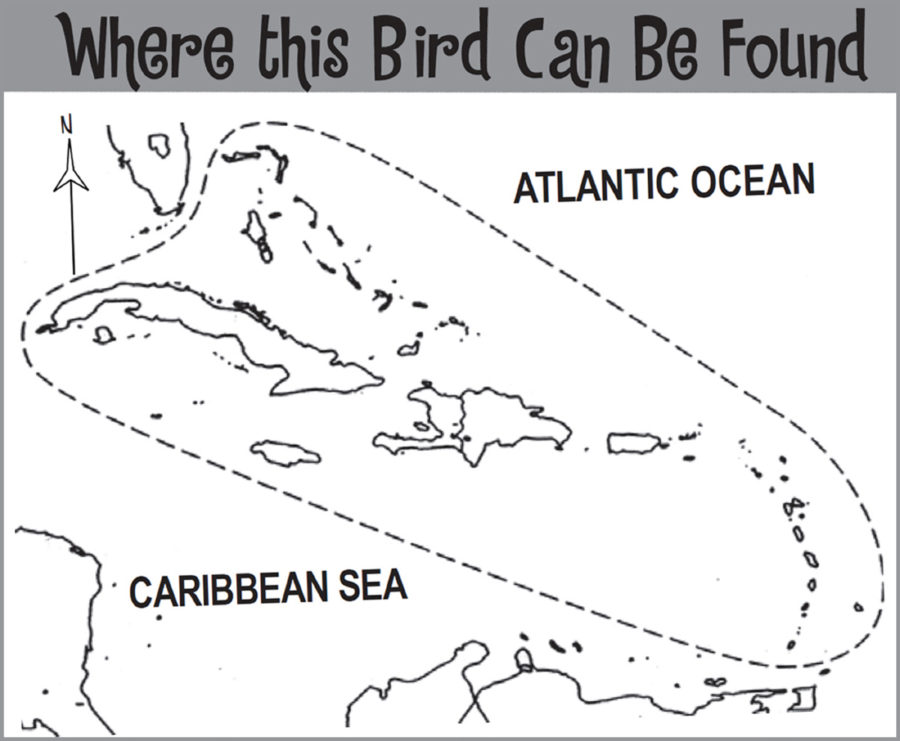
The name of this medium-sized shorebird comes from its breeding plumage, when it has dark brown spots scattered across it’s white chest and belly. Even during the winter when this bird loses its spots and is brown above and white below it is still easy to recognize. Look for the orange at the base of its mid-length beak and shortish yellow legs. Spotted Sandpipers also give us other clues as to who they are in the way they behave. They constantly ‘bob’ their tails up and down, and often look like they are teetering forward. They also have a distinctive rapid ‘flap, flap, glide’ flight, holding their wings out stiffly as they go.
Spotted Sandpipers breed in a wide area of Canada and the US and start arriving across the Caribbean from August. They will spend the winter here and can be found at the water’s edge. This might be on a beach, at a mangrove, by a stream, or even in farmland like rice fields. Here they are likely to be alone and will be looking for insects, crustaceans or worms to eat.
For most migratory birds the male arrives first in the breeding area and claims a territory. But for Spotted Sandpipers it is the females that do this. Males then do most of the care for the eggs and the chicks. Some females might even lay several clutches of eggs, each with a different male! Learn more about this species, including its range, photos, and calls here.
Colour in the Spotted Sandpiper!
Download the page from Migratory Birds of the West Indies Colouring Book. Use the photos below as your guide, or you can look up pictures of the bird online or in a bird field guide if you have one. Share your coloured-in page with us by posting it online and tagging us @BirdsCaribbean @WorldShorebirdsDay #WMBD2020Carib #WorldShoreBirdsDay
Listen to the call of the Spotted Sandpiper
The Spotted Sandpiper‘s call is a piping “we-weet” which it might repeat several times.
Puzzle of the Day
Click on the images below to do the puzzles. You can make the puzzle as easy or as hard as you like – for example, 6, 8, or 12 pieces for young children, all the way up to 1,024 pieces for those that are up for a challenge!
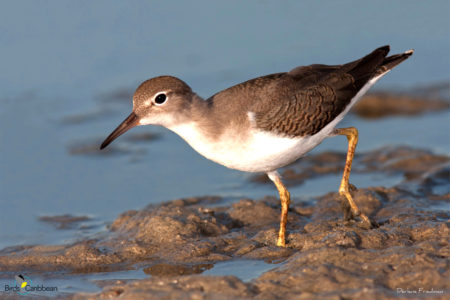
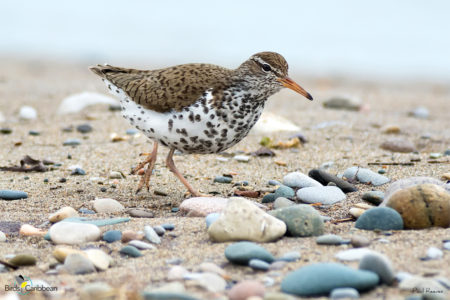
Activity of the Day
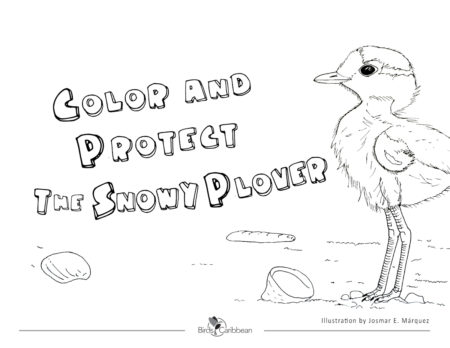 FOR KIDS: Help us celebrate World Shorebirds Day and the Global Shorebird Count (September 3 to 9) with our new Snowy Plover colouring book, Color and Protect the Snowy Plover! Colour in each page and learn all about Snowy Plovers in the Caribbean, the threats they face, and how you can protect them.
FOR KIDS: Help us celebrate World Shorebirds Day and the Global Shorebird Count (September 3 to 9) with our new Snowy Plover colouring book, Color and Protect the Snowy Plover! Colour in each page and learn all about Snowy Plovers in the Caribbean, the threats they face, and how you can protect them.
Download the English version here
Download the Spanish version here
To see more images from the colouring book and learn more about the artist, click here.
FOR KIDS AND ADULTS:
- Visit a pond, wetland or nearby beach and see how many different shorebirds and waterbirds you can find and identify. Use a bird field guide or the FREE Merlin bird ID app to help you identify the birds you are seeing.
- If you’re able, do a count of the species that you see – learn more about counting waterbirds and the Caribbean waterbird Census at this link. Learn more about World Shorebirds Day and the Global Shorebird Count (September 3 to 9, 2020) at this link.
- Enjoy the video below of a Spotted Sandpiper characteristically ‘bobbing’ its tail up and down! You can also see some of the spots which give this bird its name.
- Visit MigratoryBirdDay.org for many more free activities and resources to learn about migratory birds, their threats, and conservation actions you can take.
